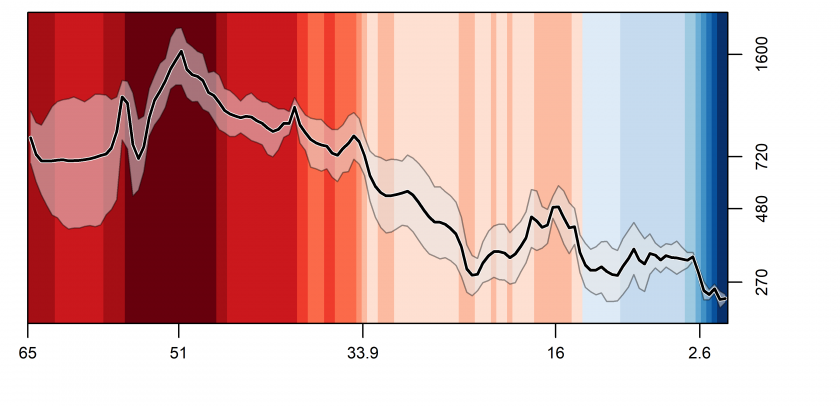Refining the CO2 Record
December 8, 2024

Scientists use a range of natural records to measure atmospheric carbon dioxide (CO₂) levels over Earth’s history. Examples include air bubbles trapped in ice cores, the chemistry of ancient soils and ocean sediments, and the anatomy of fossil plant leaves.
The methods and techniques can change over time though — which requires studies to be reassessed. A research consortia led by Columbia University’s Lamont-Doherty Earth Observatory that includes Jackson School of Geosciences Professor Dan Breecker did just that, covering geologic records for CO₂ spanning the past 66 million years. The research, which was published in the journal Science, led to some studies being excluded because they were found to be outdated or incomplete in the light of new findings. Others were recalibrated to account for the latest analytical techniques. In the end, the scientists used the data to create a new 66-million-year curve of CO₂ versus temperatures.
In addition to improving the reliability of the scientific record, the research helps put present-day concentrations of atmospheric CO₂ into context with deep time. The research indicates the last time atmospheric CO₂ consistently reached today’s human-driven levels was 14 million years ago. The study was assembled over seven years by more than 80 researchers. Breecker led the evaluation of research on ancient soils, called “paleosols.” Paleosols record past levels of CO₂ in the environment because they contain calcium carbonate rock, which is made from CO₂ that was available in the surrounding environment as it formed.
Using geochemical techniques, scientists can distinguish atmospheric CO₂ from other sources of CO₂ — such as CO₂ produced by microbial respiration — to produce a snapshot of past atmospheric concentrations. Breecker said that paleosols are an important record of CO₂ because they go back further in time than other records — such as ice — and do not reach a saturation point where they stop recording CO₂ levels. What’s more, paleosols can also record data about the surrounding environment, such as changes in rainfall and plant life. The consortium has now evolved into a larger project, the Phanerozoic CO₂ Proxy Integration Project, that aims to chart how CO₂ and climate have evolved from 540 million years ago to the present.
